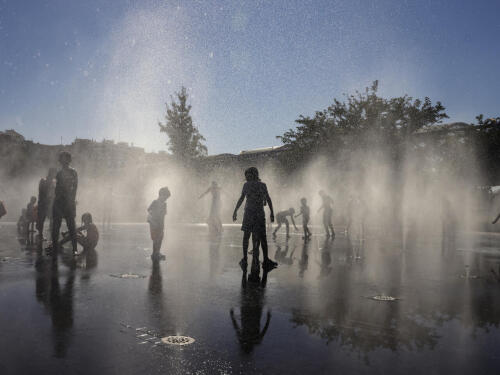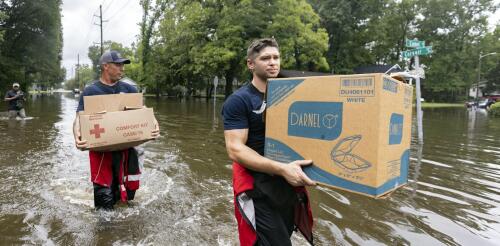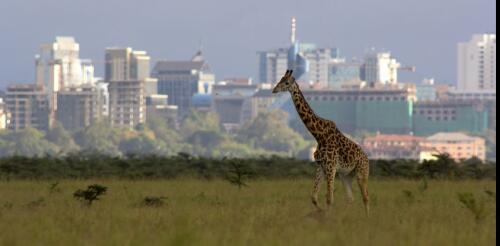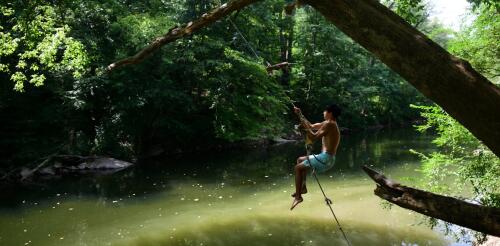Climate change
Earth withered through a second straight day of record-breaking temperatures on 22 July, the EU’s climate monitor said Wednesday, as parts of the world suffer devastating heatwaves and wildfires. Preliminary data from the Copernicus Climate Change Service (C3S) showed the daily global average temperature was 17.15 degrees Celsius on Monday, the warmest day in recorded history. This was 0.06 Celsius hotter than the day before on 21 July, which itself broke by a small margin the all-time average high temperature set only a year before. “This is exactly what climate science told us would happen if the world continued burning coal, oil and gas,” said Joyce Kimutai, a climate scientist from Imperial College London, on Wednesday. “And it will continue getting hotter until we stop burning fossil fuels and reach net zero emissions.” Copernicus, which uses satellite data to update global air and sea temperatures close to real time, s...
Tropical Storm Debby was moving so slowly, Olympians could have outrun it as it moved across the Southeast in early August 2024. That gave its rainfall time to deluge cities and farms over large parts of Florida, Georgia and the Carolinas. More than a foot of rain had fallen in some areas by early Aug. 7, 2024, with more days of rain forecast there and into the Northeast. Mathew Barlow, a climate scientist at UMass Lowell, explains how storms like Debby pick up so much moisture, what can cause them to slow or stall, and what climate change has to do with it. What causes hurricanes to stall? Hurricanes are steered by the weather systems they interact with, including other storms moving across the U.S. and the Bermuda High over the Atlantic Ocean. A hurricane may be moving slowly because there are no weather systems close enough to pull the hurricane along, or there might be a high-pressure system to the north of the hurricane that blocks its forward movement. In this case,...
Antarctica’s Thwaites Glacier got its nickname the “Doomsday Glacier” for its potential to flood coastlines around the world if it collapsed. It is already contributing about 4% of annual sea-level rise as it loses ice, and one theory suggests the glacier could soon begin to collapse into the ocean like a row of dominoes. But is that kind of rapid collapse really as likely as feared? A new study of Thwaites Glacier’s susceptibility to what’s known as marine ice cliff instability offers some hope. But the findings don’t mean Thwaites is stable. Polar scientist Mathieu Morlighem, who led the study, explains the results. Why is the Thwaites Glacier so important? Thwaites Glacier drains a huge area of Antarctica’s ice sheet – about 74,000 square miles (192,000 square kilometers), an expanse bigger than Florida. If a snowflake falls within that drainage system, it will eventually end up as part of an iceberg in the ocean off Thwaites....
Human-wildlife overlap is projected to increase across more than half of all lands around the globe by 2070. The main driver of these changes is human population growth. This is the central finding of our newly published study in the journal Science Advances. Our research suggests that as human population increases, humans and animals will share increasingly crowded landscapes. For example, as more people move into forests and agricultural regions, human-wildlife overlap will increase sharply. It also will increase in urban areas as people move to cities in search of jobs and opportunities. Animals are also moving, mainly in response to climate change, which is shifting their ranges. Across most areas, species richness – the number of unique species present – will decrease as animals follow their preferred climates. But because human population growth is increasing, there still will be more human-wildlife overlap across most lands. We also found areas where human-...
Spanning 2,000 acres with more than 50 miles of trails, Wissahickon Valley Park in northwest Philadelphia offers a variety of recreational opportunities, from hiking and biking to bird watching and picnicking. We are a professor of history who co-authored a book on the Wissahickon Valley and an assistant professor of biology. We teach students at Chestnut Hill College, which sits directly across the street from this lush urban park, about the environmental history of the Wissahickon forest and the importance of preserving its biodiversity. We’re also developing a documentary on the Wissahickon funded by the Sisters of Saint Joseph. We want our students – and all Philadelphians – to understand the importance of protecting this urban ecosystem as a way to build climate resilience. Like many of the country’s other great urban parks – from Central Park in New York or Rock Creek Park in Washington to the smaller Phalen Park in St. Paul, Minnesota R...




